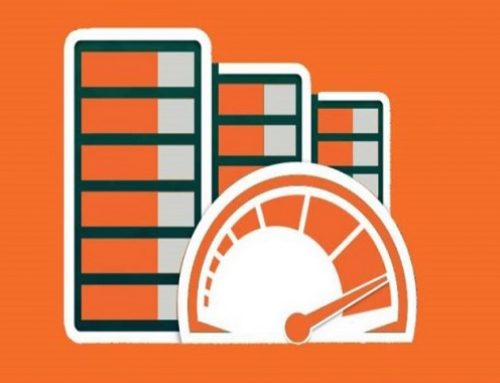Magento Customization : Magento Installation And Transmigrate It To Local Host From Remote Host
Magento’s use is quite beneficial for online business, because Magento is having superior services. Magento is an excellent open-source, and easy to use application. For downloads Magento Cart is free as well as quite easy also. Just click on magento-commerce. Com/download. After that you can easily download the software in your business website. For downloading Magento is available in different two versions. Magento also provide you facility to set up Multiple Store as per your business concern. Boost up execution of your online store with the added feature of Magento extension. Multiple Stores can be managed from single admin area.
Successful online-business best solution is Magento e-commerce.The version of installer includes only the essential files required to get down the installation process as well as most of all cases which are necessary. Full version will be more useful, if you are preparing for installation of multiple versions of Magento. Then you will only need to once download full version. Then for each new version download installer version. Whenever you have confusion about which version to download, use the variation of installer.
The Magento field is configured to allow for increasing core functionality. ECG increase Magento’s indigenous functionality to assist your business enterprises. Shared Hosting Caveat is also available in Magento. Websites that take least time in loading are the first choice of Customers. All the same, implementing a custom module requires a deep understanding of the Magento coding standards, it’s architecture, as well as modular dependence.
Following are four types of installation available for Magento Cart:
Manual: Required all files manually downloading and uploading.
Down-loader : For some files that are uploaded and run, at that time downloading script is essential which will download the rest.
SSH : Connecting to the host through shell and jetting a set number of commands that will download, zip up, and set all the file permissions right for us.
SVN (Subversion) : Exporting or checking out from the installation to host server, before dedicating to the local host server where you would like your installation.
Migrate from remote server to local server
Some methods to come through this procedure are “Through SSH “ Through FTP “ Automatic PHP. This called Migrate Magento automatic script.
By this way you can take the migration from your remote host to your XAMPP local test surroundings. Lower-down Server load. Hundred percent open source codification of extension functionality. Because you will have to first install magento at your remote host and then you will have to develop it at your hard drive for suitability as also for speed. Magento extensions can make sites many times quicker in execution. Remote hosting company gives script installer as also it is quicker to install magento with them.
Create database defecation from the magento cart back end or admin panel >System >Tools >backups >Create Backup, and then download the defecation file by clicking on the “gz”. Save the defecation file in a place and no requirement to pull out it. Create an information from phpmyadmin as well as import the defecation. Sometimes the defecation can not be successfully imported, then you need to repeat the process mentioned above.
Open C:windowssystem32driversetchosts and insert: 127.0.0.1 www.mydomain.com
Enter the file administrator from the control panel, and squeeze the magento folder into zip file. My installation is under www.mydomain.com/magento/ folder, by this way you can create a magento.zip in root folder. Now you can extract the file structure to the local XAMPP environment. You can pull out to C:// xampphtdocsmagento.
Go to C: xampphtdocsmagentovar and remove all files in that folder.
Open C: xampphtdocsmagentoappetclocal.xml and update the following settings: db-user, by default is root, db-name,the database you created in stage-one, pass by default is empty.
Go to C: xampphtdocsmagentoappetc and delete use_cache.server
Everything is done!
Magento database-Reinstalling
During important stage Magento will formalize version of database composition against the modules versions to code predominant version updates. When it sees that module version is greater than one installed in database it will run upgrade scripts module provides. This will happen every time a page loads and configuration file or one of the core tables in db has been changed.
Add available Magento Extensions that use Cache. Proper Configuration of Cache. Use of Expire Header. Use of CDN. Reduce number of http request by compiling/compressing JS and CSS files into one file each. Proper and updated Indexing.
It is possible to reinstall the database from scratch at any time. It had all requisites which can be imagined by you. If there’s no indication that this module has been set up, it will run first the most modern accessible install script. Aim of Magento Customization is to give power and control over content, looks of website and functionality, in the hands of online-sellers. The simplest way is just to drop the database and recreate it. These Magento extensions installation, over load of server can be reduced & your server will manage to deal with number of customers at one time. You will need to run mode change before running your drop tables statement, if you do not have permissions to delete database and then return as it was before.
Successful online-business best solution is Magento e-commerce.The version of installer includes only the essential files required to get down the installation process as well as most of all cases which are necessary. Full version will be more useful, if you are preparing for installation of multiple versions of Magento. Then you will only need to once download full version. Then for each new version download installer version. Whenever you have confusion about which version to download, use the variation of installer.
The Magento field is configured to allow for increasing core functionality. ECG increase Magento’s indigenous functionality to assist your business enterprises. Shared Hosting Caveat is also available in Magento. Websites that take least time in loading are the first choice of Customers. All the same, implementing a custom module requires a deep understanding of the Magento coding standards, it’s architecture, as well as modular dependence.
Following are four types of installation available for Magento Cart:
Manual: Required all files manually downloading and uploading.
Down-loader : For some files that are uploaded and run, at that time downloading script is essential which will download the rest.
SSH : Connecting to the host through shell and jetting a set number of commands that will download, zip up, and set all the file permissions right for us.
SVN (Subversion) : Exporting or checking out from the installation to host server, before dedicating to the local host server where you would like your installation.
Migrate from remote server to local server
Some methods to come through this procedure are “Through SSH “ Through FTP “ Automatic PHP. This called Migrate Magento automatic script.
By this way you can take the migration from your remote host to your XAMPP local test surroundings. Lower-down Server load. Hundred percent open source codification of extension functionality. Because you will have to first install magento at your remote host and then you will have to develop it at your hard drive for suitability as also for speed. Magento extensions can make sites many times quicker in execution. Remote hosting company gives script installer as also it is quicker to install magento with them.
Create database defecation from the magento cart back end or admin panel >System >Tools >backups >Create Backup, and then download the defecation file by clicking on the “gz”. Save the defecation file in a place and no requirement to pull out it. Create an information from phpmyadmin as well as import the defecation. Sometimes the defecation can not be successfully imported, then you need to repeat the process mentioned above.
Open C:windowssystem32driversetchosts and insert: 127.0.0.1 www.mydomain.com
Enter the file administrator from the control panel, and squeeze the magento folder into zip file. My installation is under www.mydomain.com/magento/ folder, by this way you can create a magento.zip in root folder. Now you can extract the file structure to the local XAMPP environment. You can pull out to C:// xampphtdocsmagento.
Go to C: xampphtdocsmagentovar and remove all files in that folder.
Open C: xampphtdocsmagentoappetclocal.xml and update the following settings: db-user, by default is root, db-name,the database you created in stage-one, pass by default is empty.
Go to C: xampphtdocsmagentoappetc and delete use_cache.server
Everything is done!
Magento database-Reinstalling
During important stage Magento will formalize version of database composition against the modules versions to code predominant version updates. When it sees that module version is greater than one installed in database it will run upgrade scripts module provides. This will happen every time a page loads and configuration file or one of the core tables in db has been changed.
Add available Magento Extensions that use Cache. Proper Configuration of Cache. Use of Expire Header. Use of CDN. Reduce number of http request by compiling/compressing JS and CSS files into one file each. Proper and updated Indexing.
It is possible to reinstall the database from scratch at any time. It had all requisites which can be imagined by you. If there’s no indication that this module has been set up, it will run first the most modern accessible install script. Aim of Magento Customization is to give power and control over content, looks of website and functionality, in the hands of online-sellers. The simplest way is just to drop the database and recreate it. These Magento extensions installation, over load of server can be reduced & your server will manage to deal with number of customers at one time. You will need to run mode change before running your drop tables statement, if you do not have permissions to delete database and then return as it was before.






